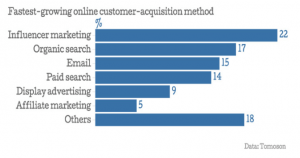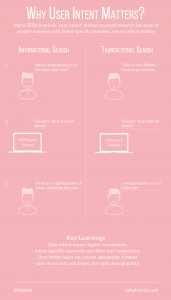It’s the question that’s been on everyone’s mind lately: when will things go back to normal?
It’s understandable, especially without an end date in sight. But the reality is, while some things will take weeks or months, others simply won’t go back to normal and what we’re experiencing now will become the new “normal”. Change isn’t necessarily bad, though. Uncertain times like these help accelerate innovation, especially for businesses. Here are some trends we’re both seeing and experiencing that are set to surely become our new normal:
TELECOMMUTING AND ONLINE EVERYTHING
The need for telecommuting is the most obvious change happening right now. Social distancing means we have had to stop all non-essential in-person contact, leading to remote work for those who are able. For some companies, like Stryve, this was an easy transition. We already had the tools and software to work remotely- Slack and Microsoft Teams have been our BFFs lately. Other companies were less prepared and have been unceremoniously forced into digital transformation. As a result, teams are scrambling to ramp up their technological capabilities.
There are many service-based industries where working from home simply isn’t an option. Even still, many have found temporary, creative ways to work through the pandemic, like these salons giving virtual haircuts. For other industries, going digital may revolutionize how things operate from now on. Take Maple, for example, the platform looking to eliminate waiting rooms, the transmission of germs, and scheduling conflicts from clinics by going virtual. Who would have thought visiting your doctor was something primed for disruption?
The bottom line is that remote work, virtual meetings, and other digital services are here to stay. With everyone stuck at home, it’s no surprise that the digital world is busier than ever. In fact, according to reports, global internet traffic is up 50%. With customers now seeing they don’t need to go anywhere, don’t expect them to flock to storefronts when this is all over. Instead, watch them get swept away by companies who’ve taken their business online.

TRADESHOWS AND EVENTS
In-person events are the lifeblood of many industries. B2B businesses, in particular, consider targeted events to be one of their most successful lead generation tools. According to a Demand Generation Report study, more than 76% of marketers named events as their most successful top-of-funnel B2B lead generation tactic. That’s great, but what are we supposed to do now that the government has limited social gatherings to a maximum of 5 people? I sure hope you’re a good closer.
In all seriousness, it’s going to be a while before people feel comfortable in crowds again. So how can businesses look to replicate the tradeshow experience without the tradeshow? Here are some options:
- Turn your booth sales pitch into an online webinar series
- Participate in a virtual tradeshow or join forces with industry partners to hold your own
- Run a Google search campaign and improve your SEO to reach new audiences
- Host a live event on Facebook or LinkedIn Live
- Focus on a new content marketing strategy
With businesses often spending tens of thousands of dollars on tradeshows, marketing teams should be able to explore these alternate tactics while reducing budgets. If targeting is well-executed, companies could actually generate more leads by pivoting away from tradeshows due to the larger scale of the digital audience. Not only that, but these digital tactics come with the advanced data and tracking that tradeshows lack, enabling companies to more confidently assess ROI.
SHIFTING CONSUMER BEHAVIOUR AND PRIORITIES
With the abrupt onset of COVID-19, consumers have been forced to change their behaviour overnight. As of writing this, we’re on week 6 of flattening the curve and even the most habitual things like how we eat, exercise, and socialize have changed. Now that you’re ordering groceries online, will you go back to grocery shopping in-store? Will you stick to your home workout or renew your gym membership? Some of these changes are sure to shape our habits for years to come.
Take streaming, for example. According to a study conducted by OnePoll, the average American is streaming 8 hours a day since the start of the pandemic. I’m sure Canadians aren’t too far behind, either. With this development, movie studios have discussed distributing content direct-to-consumer. If that were to happen, how would marketing and advertising fit in? With content consumption proving to be pandemic-proof, maybe this is the time to explore Connected TV campaigns, Hulu ads, or other stream-based opportunities?

The bigger change, and one that’s definitely here to stay, is the full embrace of e-commerce. Although it’s been widely used for years, it’s not for everyone, with many still opting for the face-to-face interaction that comes with in-person shopping. Despite what people may prefer, COVID-19 has forced people to adapt. With that, Shopify has reported “Black Friday levels of traffic” on customers’ online stores. They’ve also become Canada’s second-highest valued company on the stock market. Meanwhile, companies like Home Depot and Canadian Tire can’t keep up with curbside pick up orders and Instacart is set to hire 300,000 more employees to fulfill orders. If you’re not equipped to sell services or products online, this whole experience should be more than enough to make e-commerce and online shopping a priority.
Speaking of priorities, B2B organizations can expect the goals and priorities of their customers to change in weathering the economic downturn. Maybe that means customers focusing on reducing costs over increasing revenue. If that’s the case, you’ll need to adjust your messaging, marketing, and positioning to cater to that pivot. Whoever your audience may be and however they may change, you’ll need to respond quickly and accordingly to align with them.
SO… IS IT OKAY TO DO NORMAL MARKETING YET?
Right now, marketing is a little hard. To advertise, or not to advertise? Is it really necessary to send out that “We’re here for you in these troubling times…” email? People obviously have more important things to worry about. If you haven’t adjusted your messaging to be sensitive to what’s going on in the world, things could backfire for your company. Could there be anything more cringe-worthy than a KFC advertisement focused on finger-licking during a time of hyper-cleanliness? Read the room, guys.
Between finding the right tone and gauging what’s appropriate right now, there’s a lot more to consider before you hit “launch” on that campaign. But, there is still the opportunity to market yourselves while providing a positive impact. Whether it’s larger-scale efforts like Dove’s “Courage is beautiful” campaign or something as small as encouraging others to support local shops, campaigns that put people first will be well-received.
While pandemic related news is still dominating the headlines, we are gradually getting used to life online. People want to feel like things are getting back to normal so marketing should soon get back to business as usual. Just be mindful of customer priorities. Some trends will persist, and some will fade. What can be said with certainty is that brands and businesses that are able to be flexible and adaptive to their marketing strategy now, will reap the future rewards.
Business & Finance Articles on Business 2 Community
(55)







